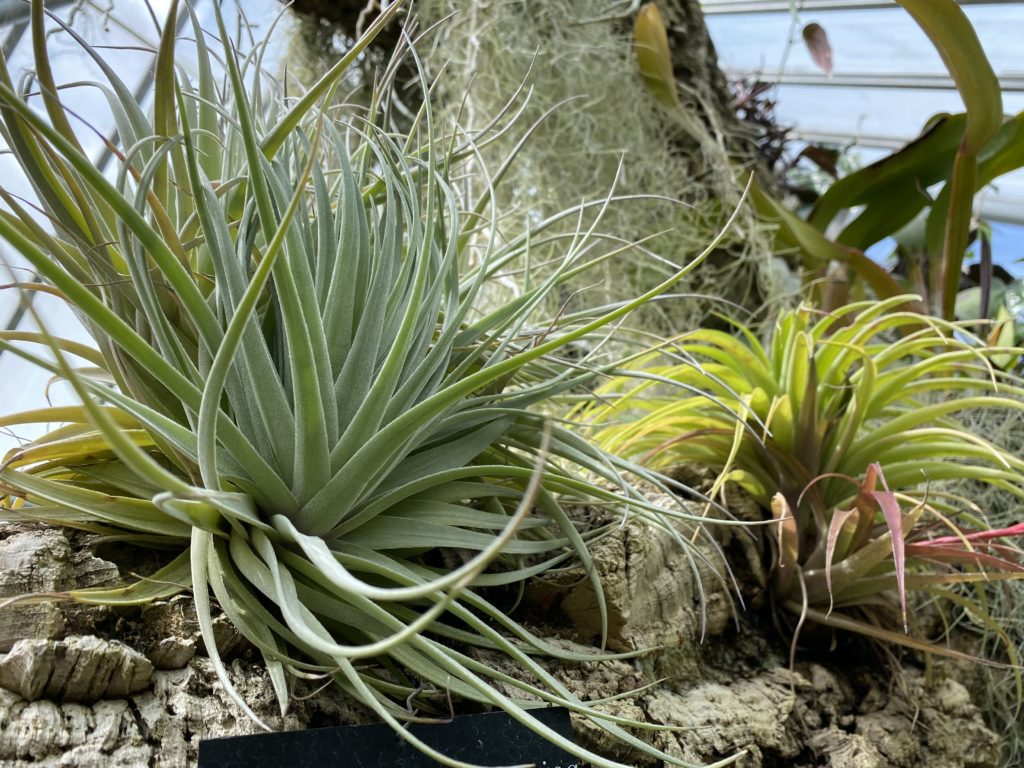As the world continues to spend more time indoors, the desire to bring a touch of nature into our homes has become increasingly popular. While traditional houseplants like spider plants and peace lilies are great options, the addition of unique houseplants can take your indoor gardening to the next level.
Unique houseplants come in a variety of shapes, sizes, and colors, making them a great way to add interest and personality to your home decor. They can also be conversation starters and make great gifts for fellow plant enthusiasts. But the benefits of unique houseplants don’t stop there.
In fact, these plants can offer a range of benefits beyond just their aesthetic appeal. Some plants, like the snake plant and spider plant, are known for their air-purifying properties, while others, like the aloe vera plant, have medicinal uses. With so many unique houseplants to choose from, the possibilities are endless.
Whether you’re a seasoned plant parent or just starting out, adding unique houseplants to your collection can be a fun and rewarding way to enhance your indoor space and connect with nature. So why not take the plunge and explore the world of unique houseplants? You never know what kind of surprises and benefits you might discover.
Air Plants: Low-Maintenance and Striking
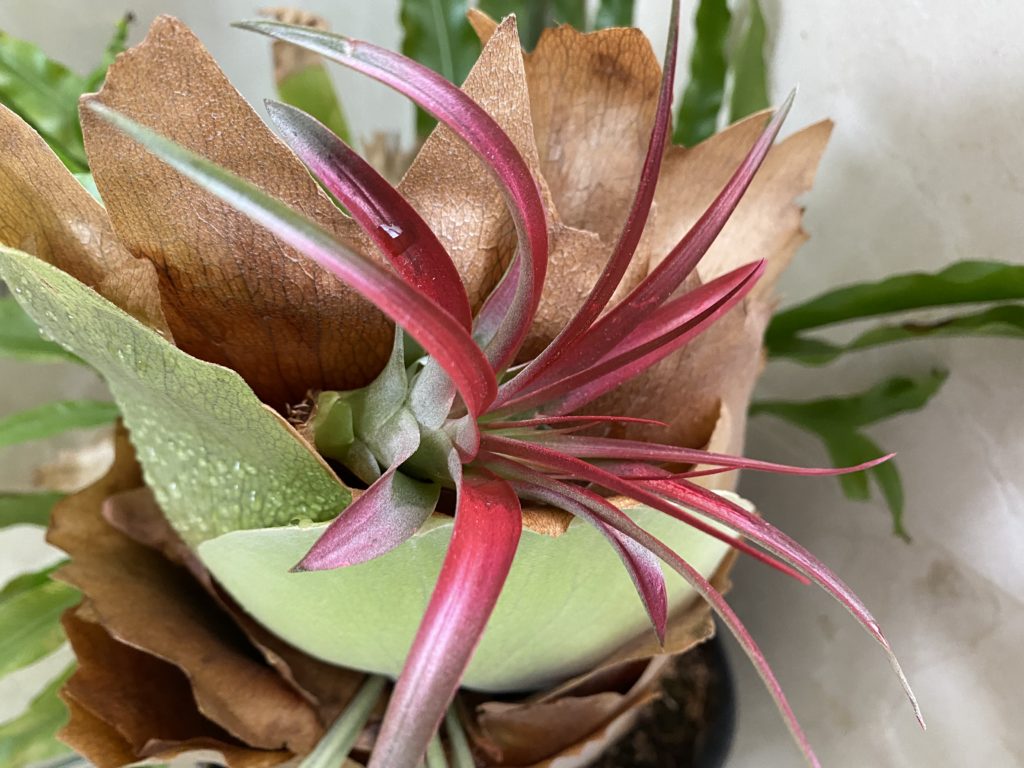
Air plants, also known as Tillandsia, are a fascinating and peculiar addition to any houseplant collection. These plants are epiphytes, which means they do not require soil to grow. Instead, they absorb nutrients and moisture through their leaves from the air around them, making them incredibly low-maintenance and easy to care for.
The diversity of air plants is astounding, with a plethora of shapes and sizes available, ranging from small and delicate to large and striking. They can be displayed in a variety of ways, such as mounted on a piece of driftwood or placed in a decorative container. They also make great additions to terrariums and other indoor gardens.
One of the most captivating features of air plants is their unique appearance. They come in a range of colors, from bright green to deep purple, and some even have a fuzzy texture. Their leaves can be curly, spiky, or even resemble a sea creature, making them a fascinating and intriguing addition to any collection.
To care for air plants, simply mist them with water once a week or soak them in water for 30 minutes every two weeks. They prefer bright, indirect light and should be kept in a warm, humid environment. However, it is important to note that each air plant has its own specific care requirements, so it is essential to research the specific needs of each plant.
Overall, air plants are an excellent choice for anyone looking to add a low-maintenance and striking plant to their collection. With their unique appearance and easy care, they are sure to be a conversation starter in any home.
Pitcher Plants: Carnivorous and Fascinating
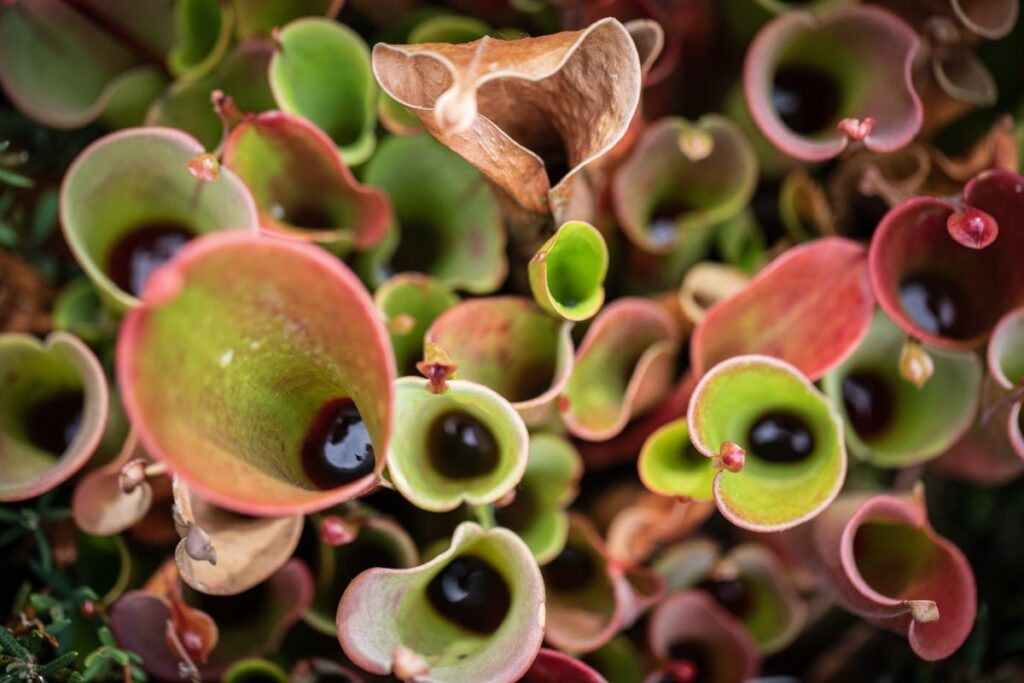
Are you seeking a distinctive and captivating addition to your houseplant collection? Look no further than pitcher plants! These carnivorous plants are not only visually intriguing, but they also serve a practical purpose in your home by ensnaring and digesting insects.
Pitcher plants come in a plethora of shapes and sizes, but they all share one commonality: a deep, funnel-shaped cavity brimming with digestive enzymes. Insects are lured to the sweet nectar on the rim of the pitcher and subsequently plummet into the cavity, where they are ensnared and digested.
One of the most sought-after types of pitcher plants is the Nepenthes, which is indigenous to Southeast Asia. These plants boast long, slender pitchers that can grow up to a foot long. They exhibit a range of colors, from green to red to purple, and some even showcase intricate patterns on their pitchers.
Another popular type of pitcher plant is the Sarracenia, which is native to North America. These plants feature shorter, wider pitchers that are often vividly colored with intricate patterns. Certain species even possess a hood over the opening of the pitcher, which aids in trapping insects.
Pitcher plants are relatively low-maintenance, but they do necessitate some special attention. They require a humid environment, so it’s advisable to place them in a terrarium or to regularly mist them. They also require watering with distilled or rainwater, as tap water can be too alkaline for them.
If you’re seeking a distinctive and captivating addition to your houseplant collection, contemplate adding a pitcher plant. Not only will it add a touch of intrigue to your home, but it will also aid in keeping pesky insects at bay.
String of Pearls: Delicate and Eye-Catching
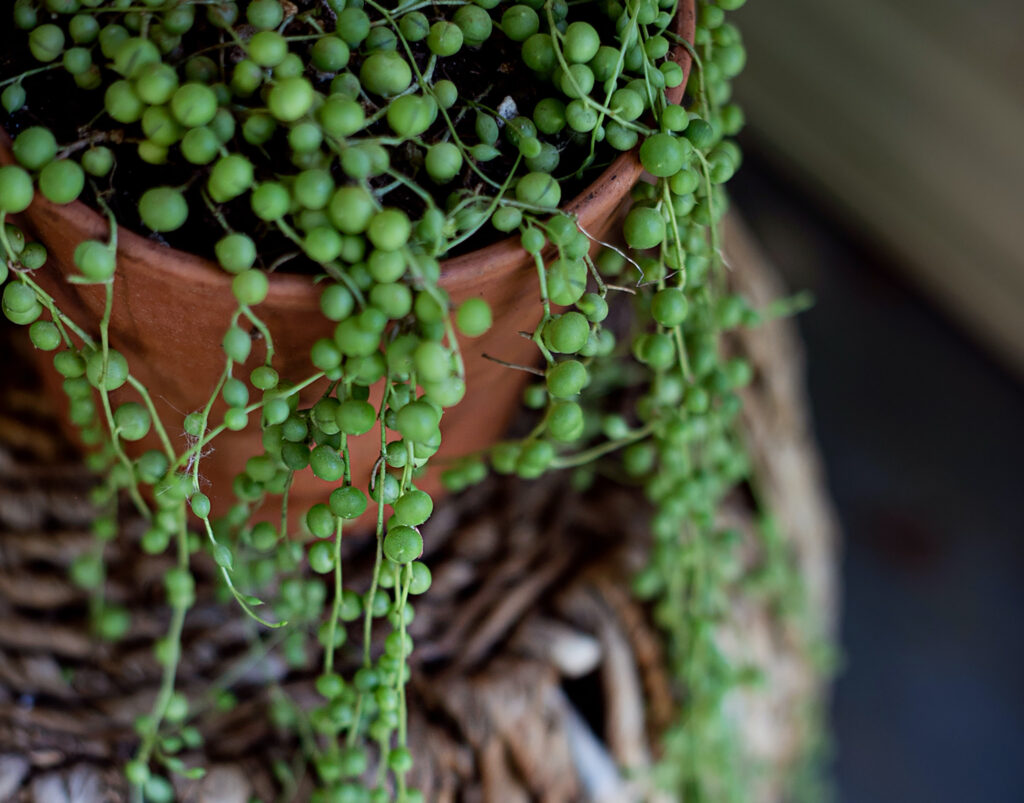
If you’re on the hunt for a plant that’s both delicate and eye-catching, the String of Pearls is the perfect choice. This succulent boasts long, trailing stems that are adorned with small, bead-like leaves that resemble pearls. It’s a member of the Senecio family and hails from South Africa.
Despite its unique appearance, the String of Pearls is relatively easy to care for, making it a great option for both novice and experienced plant owners. It thrives in bright, indirect light and requires well-draining soil. However, it’s important to avoid overwatering this plant, as it’s prone to root rot. To keep it healthy, allow the soil to dry out completely between waterings.
One of the most striking features of the String of Pearls is its trailing stems, which can grow up to three feet in length. This makes it an excellent choice for hanging baskets or for trailing down shelves or bookcases. Its delicate appearance also makes it a popular choice for terrariums or fairy gardens.
In addition to its aesthetic appeal, the String of Pearls is also believed to have air-purifying properties. Like many succulents, it’s able to absorb toxins from the air, making it a great choice for improving indoor air quality.
All in all, the String of Pearls is a stunning and unique addition to any houseplant collection. Its delicate appearance and trailing stems make it a standout plant that’s sure to catch the eye of anyone who sees it.
Venus Flytrap: Another Carnivorous Option
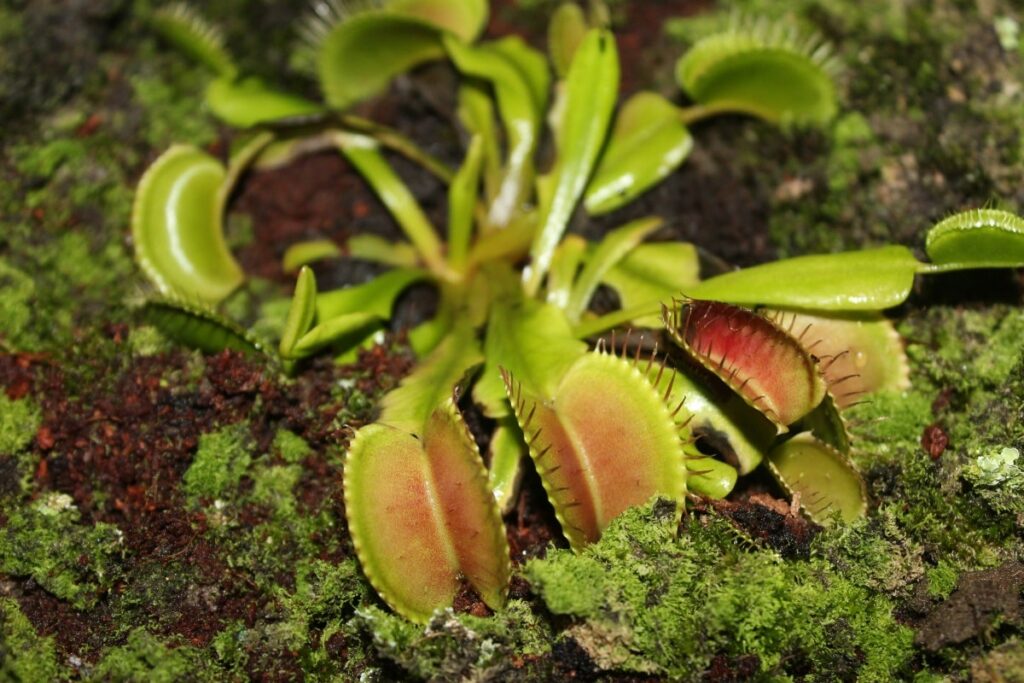
If you’re on the hunt for a plant that’s both intriguing and distinctive, then the Venus Flytrap is the perfect addition to your collection. This carnivorous plant is indigenous to the wetlands of the southeastern United States and is renowned for its ability to ensnare and digest insects.
The Venus Flytrap’s leaves are easily recognizable, as they are divided into two lobes, each of which is lined with small, sensitive hairs. When an insect lands on the leaf and brushes against these hairs, the lobes snap shut, trapping the insect inside. The plant then secretes digestive enzymes to break down the insect and absorb its nutrients.
To ensure that your Venus Flytrap thrives, it’s essential to replicate its natural habitat as closely as possible. This means providing it with a soil mix that drains well and is low in nutrients, as the plant derives most of its nutrients from the insects it captures. Additionally, it requires plenty of bright, indirect sunlight and high humidity levels.
Watering a Venus Flytrap can be a bit of a challenge, as it needs to be kept consistently moist but not waterlogged. It’s best to use distilled or rainwater, as tap water can contain minerals that may harm the plant. You can also feed your Venus Flytrap small insects like fruit flies or crickets, but be cautious not to overfeed it, as this can cause the plant to rot.
All in all, the Venus Flytrap is a captivating and unique houseplant that is sure to spark conversation. With proper care, it can live for several years and continue to captivate the hearts of plant enthusiasts everywhere.
Prayer Plant: Beautiful and Easy to Care For
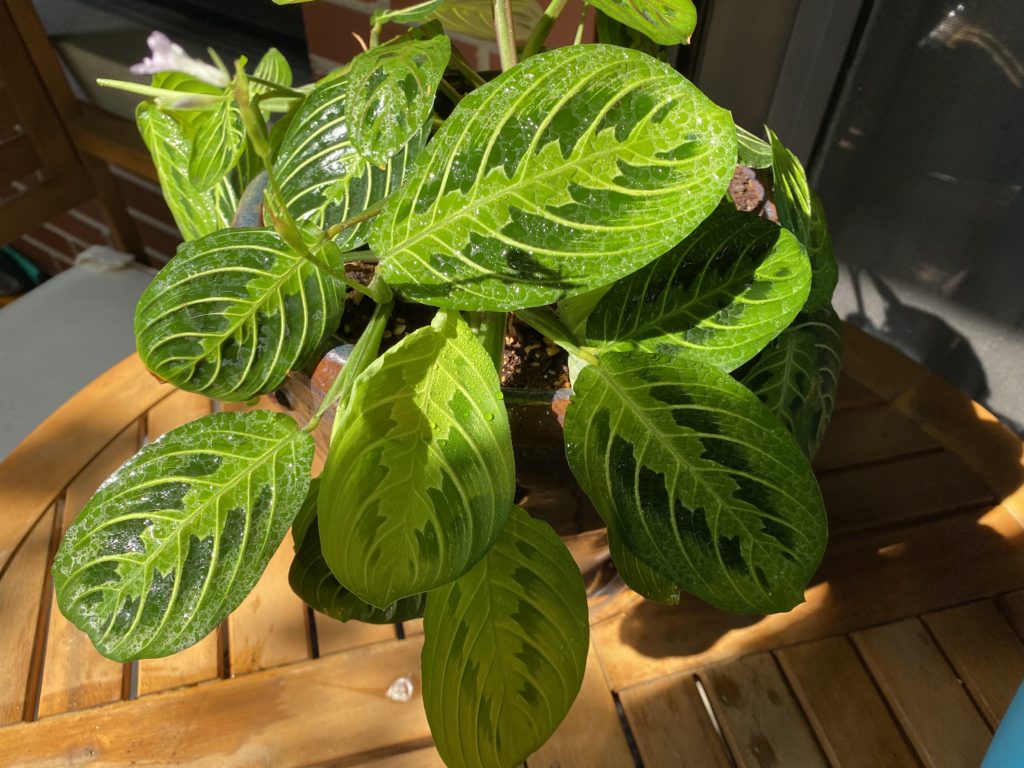
The Prayer Plant, scientifically known as Maranta leuconeura, is a stunning and exotic houseplant that is sure to catch the eye of any plant enthusiast. This plant is native to the tropical regions of Central and South America, where it thrives in the humid and warm environment. Its unique foliage is what sets it apart from other plants, as it folds up at night, resembling hands in prayer.
One of the most appealing aspects of the Prayer Plant is its ease of care. It is a low maintenance plant that requires minimal attention, making it perfect for those who are new to plant care or have a busy lifestyle. It prefers bright, indirect light and a humid environment, making it an ideal plant for bathrooms or kitchens where moisture is abundant.
When it comes to watering, the Prayer Plant likes to be kept consistently moist, but not waterlogged. It is important to allow the top inch of soil to dry out before watering again, as overwatering can lead to root rot. Therefore, it is crucial to be mindful of the amount of water the plant is receiving.
Another great feature of the Prayer Plant is its ability to be propagated easily by division. This means that you can easily share this beautiful plant with friends and family, making it a great addition to any collection.
Overall, the Prayer Plant is a beautiful and unique houseplant that is perfect for any home. Its low maintenance requirements and stunning foliage make it a must-have for any plant enthusiast.
Snake Plant: Durable and Air-Purifying
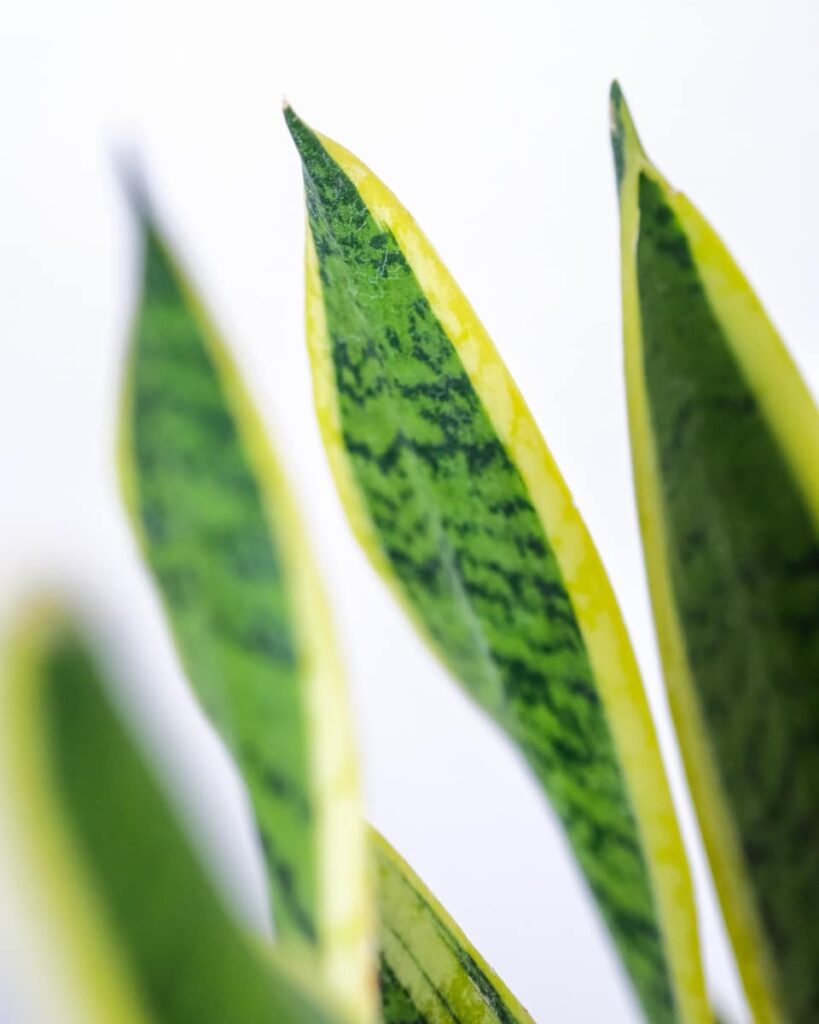
If you’re on the hunt for a houseplant that can withstand the test of time and also purify the air, then look no further than the Snake Plant. This plant, also known as Sansevieria, hails from West Africa and boasts long, upright leaves that resemble snakes.
One of the most impressive features of the Snake Plant is its ability to purify the air. It’s a master at removing toxins like formaldehyde, benzene, and trichloroethylene from the air, making it a top pick for any home or office. It can thrive in a variety of lighting conditions, from low to bright, and can handle neglect like a champ. This makes it the perfect plant for those who are new to gardening or have a busy lifestyle.
Caring for the Snake Plant is a breeze. It prefers well-draining soil and should be watered sparingly, allowing the soil to dry out between waterings. And if you want to give it a little extra love, occasional fertilization during the growing season can do wonders.
And let’s not forget about its aesthetic appeal. The Snake Plant is a stunning addition to any plant collection. Its long, upright leaves add height and texture to any space, and it comes in a variety of colors and patterns, from solid green to variegated yellow and green.
All in all, the Snake Plant is a top-notch choice for anyone seeking a low-maintenance, air-purifying plant that brings beauty and texture to any room.
Conclusion: Adding Unique Houseplants to Your Collection
The addition of unique houseplants to your indoor garden can bring a whole new level of excitement and interest to your living space. Not only do they add a touch of personality and style to your home, but they also offer a range of benefits such as air purification, stress relief, and improved mental health.
However, selecting the right unique houseplants can be a daunting task. It’s important to consider their specific care requirements and ensure that they are suitable for your living space. Some may require more attention and maintenance than others, but the rewards of a thriving and diverse indoor garden are well worth the effort.
Luckily, there are endless options for unique houseplants to add to your collection, whether you’re a seasoned plant enthusiast or just starting out. From the exotic and rare to the quirky and unusual, there’s a plant out there for everyone.
So why not take the plunge and add some unique houseplants to your collection today? You never know what kind of beauty and wonder they may bring to your home. With a little bit of research and care, your indoor garden can become a vibrant and thriving oasis of greenery and life.
Frequently Asked Questions
What are some unique houseplants to add to my collection?
Some unique houseplants to add to your collection include the String of Pearls, the Prayer Plant, the Chinese Money Plant, the Bird’s Nest Fern, and the Snake Plant.
What are some low-maintenance houseplants?
Some low-maintenance houseplants include the ZZ Plant, the Pothos, the Spider Plant, the Snake Plant, and the Peace Lily.
What are some houseplants that are safe for pets?
Some houseplants that are safe for pets include the Spider Plant, the Boston Fern, the African Violet, the Bamboo Palm, and the Christmas Cactus.
What are some houseplants that can improve air quality?
Some houseplants that can improve air quality include the Snake Plant, the Spider Plant, the Peace Lily, the Rubber Plant, and the English Ivy.
What are some houseplants that can thrive in low light conditions?
Some houseplants that can thrive in low light conditions include the Snake Plant, the ZZ Plant, the Pothos, the Cast Iron Plant, and the Peace Lily.

